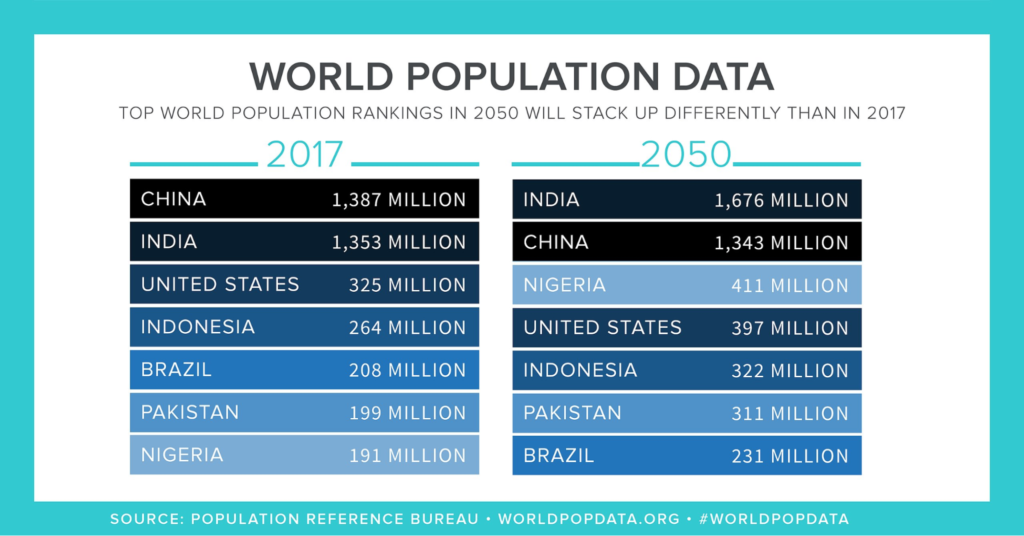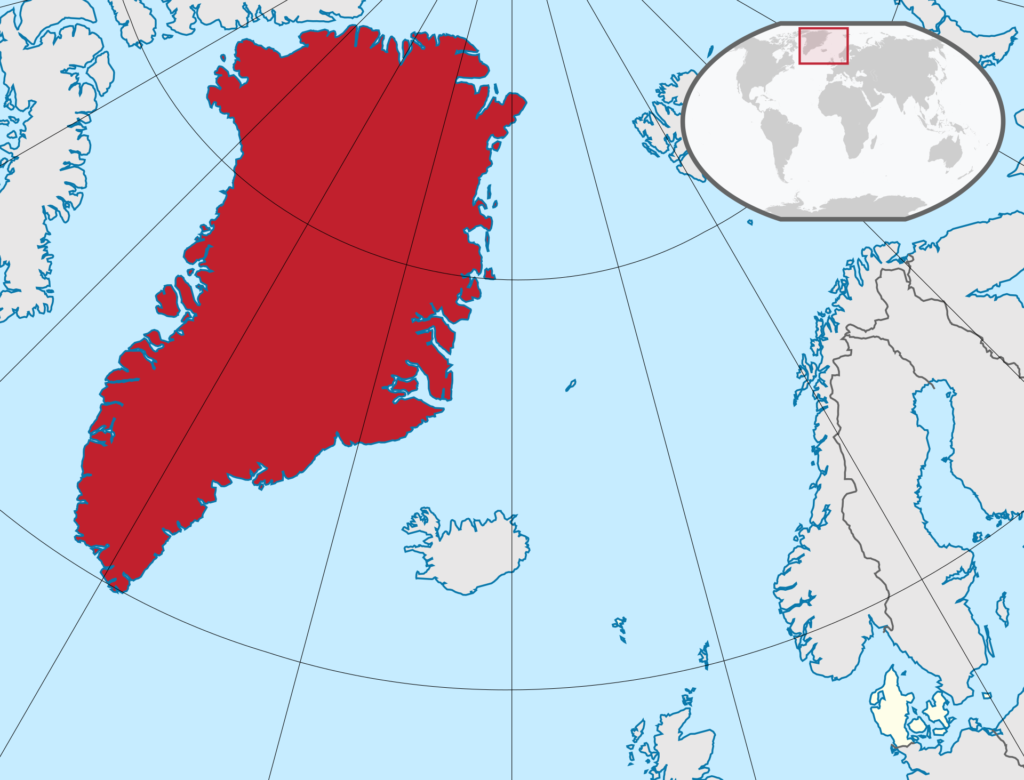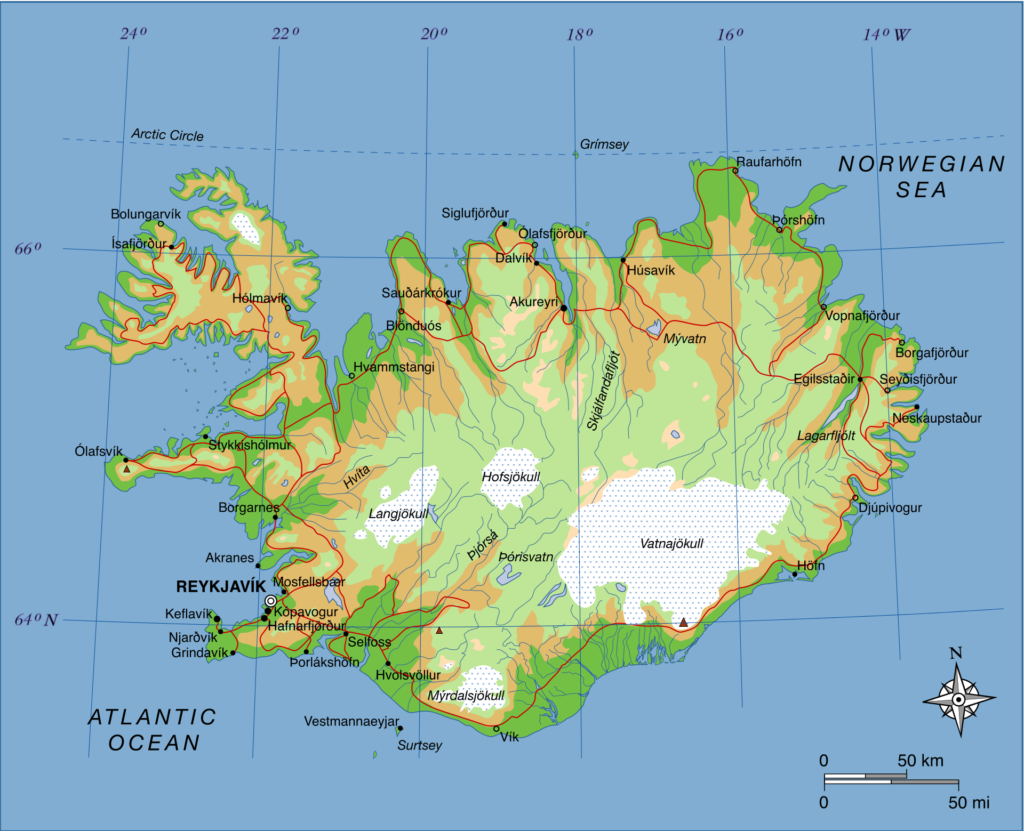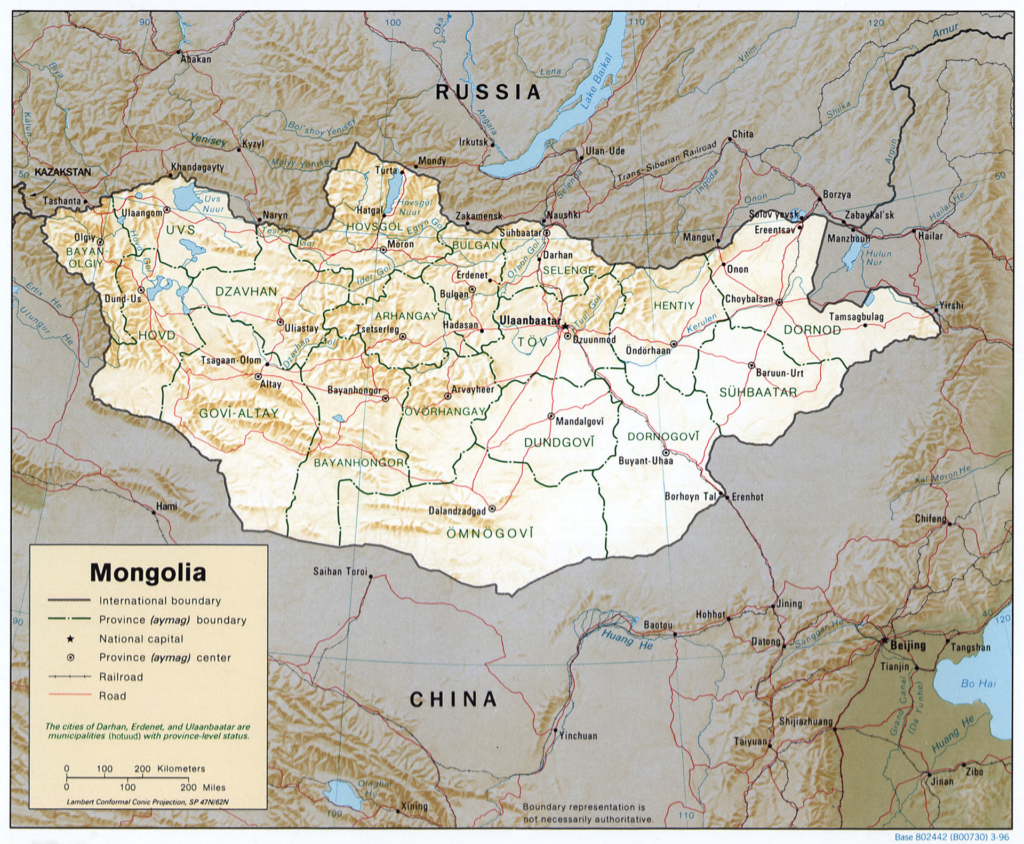Underpopulation refers to a condition in which the number of people living in a given area or country is not sufficient to support the needs and goals of the population. This can be caused by a variety of factors, including low birth rates, high death rates, and migration. Underpopulation can lead to a number of negative consequences, such as economic stagnation, reduced social services, and difficulty sustaining critical infrastructure. Additionally, underpopulation can lead to a lack of diversity, and can result in problems such as labour shortages, reduced economic growth and social isolation.
Population defined
A population is the number of inhabitants living in a specific area. The human population specifically pertains to the sum of individuals that live in an area, country, or region. Over the last few centuries, there has been a dramatic increase in the human population. This is largely thanks to advancements in technology, agriculture, sanitation, and health care. Along with these, the beginning of the 21st century witnessed the global population’s transition from predominantly rural settlements to primarily urban settlements. The common notion is one of overpopulation, but underpopulated countries do exist.
Population and its many components such as population growth, distribution, and movement, are potent forces that drive both human and physical events. One characteristic of human populations is that they have a strong influence on both natural and artificial environments. Issues related to population, such as overpopulation, are often talked about with regard to the interaction between humans and their environment. These discussions include concerns such as the availability of natural resources and people’s relationship with these resources.
Read more about Classifying World Populations
Global Population

In 2021, the global human population was estimated to be 7.9 billion people. Scientists project that this number will continue to rise in the years to come. Some studies suggest that the Earth has a maximum supporting capacity and can only adequately sustain 9–10 billion people. However, this estimate depends on a variety of other factors such as the distribution of the population, and how fast we consume important resources such as food, water, and energy. The global human population is estimated to reach 9 billion by the year 2100.
The majority of world population growth only occurred in the last century, and mostly in the world’s developing countries. The human population, its patterns, and effects have therefore become an important point of scientific inquiry. Ecologists suggest that the world’s human population has grown past our planet’s supporting capacity. It is estimated that if every person on Earth were to adopt the average American lifestyle, the Earth’s resources would not be enough to support the current world population.
World Population Distribution

In reality, humans occupy only a small percentage, around 5%, of the Earth’s surface. This is because our planet is covered with a variety of geological features that are hard to occupy, such as deserts, rainforests, oceans, and glaciers. Areas in which human populations permanently reside are called ecumene. The growth of human populations and the development of technology contribute greatly to the increase of human ecumene. Additionally, these also have significant effects on many of the Earth’s ecosystems.
The nature of the Earth’s irregular geography is largely responsible for the distribution of human populations around the world. People are not spread out uniformly, rather they live in clusters. Human habitation is limited by the natural factors in our environment. Populations are usually lower in less extreme environments. Often, humans avoid living in areas that are too hot, cold, dry, wet or mountainous. On the other hand, larger populations tend to be located in areas near large bodies of water, or those that are abundant with natural resources or mineral deposits.
These factors have led the global human population to live in three major clusters, namely, East Asia (China), South Asia (India and Indonesia), and Europe. A great majority of people live in East and South Asia.
Underpopulation
Overpopulation is the state wherein the size of a population is too large to be sufficiently supported by the resources of a specific region or country.
In contrast to this, underpopulation indicates a region or country’s lack of sufficient workers in the population to efficiently utilise their resources, support older populations, and aid economic growth. In other words, underpopulation occurs where there are too few people to effectively maximise the resources of an area.
Underpopulation may occur in rural areas as people flock to urban areas, or are otherwise displaced by natural hazards, war, and infectious diseases such as HIV. Depopulation and a decline in agricultural production are also contributors to the underpopulation of rural regions. At present, the majority of areas considered to be underpopulated are those large in size and rich in resources.
Underpopulation can have many negative impacts on a region or country’s economy. A few examples of the impact of underpopulation include limitations in the workforce, fewer taxpayers, the wasting of a region’s resources, and the closure of various services.
Underpopulated Countries
Australia

Australia is the world’s sixth-largest country. It has an area of 7,682,264 square kilometres, making it nearly the size of the United States of America. Australia has a total population of 25,499,884, ranking as the 55th country with the largest population in the world. It has a population density of 9 people per square mile. From 2015–2020, Australia had a population growth rate of 1.3%, landing it a spot as the 21st country with the slowest population growth in the world.
Most of Australia’s population is concentrated in its coastal regions. The centre of the country is dry, arid, and has extended periods of drought, intense heat waves, and wildfires. Climate change and a rise in global temperatures have made these areas even more inhospitable to their inhabitants.
Canada

Canada is the world’s second-largest country by area, with an area of 9,093,468 square kilometres. It is also the world’s 39th largest country by population size at 37,742,154. Canada has a population density of only 11 people per square mile. Although its sheer size lands it in the spot for the world’s second-largest country by area, much of Canada has temperatures too low to be comfortably inhabited by people. The majority of Canada’s inhabitants settle along its southern border, which it shares with the United States. In this region, the climate is much milder, and agriculture is possible. Canada has the world’s 15th slowest population growth rate at 0.9%, which is largely the product of immigration.
Greenland

Greenland is an island-nation considered part of the North American continent. A great majority of this island, 80% to be specific, is covered by a large glacier. In the summer, Greenland’s arctic and subarctic temperatures range from -1.11–10°C. Greenland’s temperatures in the winter stay consistently below -18°C.
Greenland is the world’s 12th largest country with an area of approximately 410,448 square kilometres. At the same time, however, it is also the world’s least densely populated country. Greenland has a population density of 0.4 people per square mile. In 2020, Greenland’s population was estimated to be 56,770 – the 5th smallest population in the world. A majority of this population is made up of the Kalaallit, an Inuit people. More than 80% of the Kalaallit live on Greenland’s southwest coast. This is largely because this region has the mildest climate. In between the years 2015–2020, Greenland had the world’s third slowest population growth rate at 0.1%.
Iceland

Iceland is the second-largest island in Europe. Located in the Arctic Circle in between Greenland and Scotland, it has an area of 100,250 square kilometres. Iceland has a population of roughly 362,860 people. The majority of this population, around 63%, lives in the vicinity of its capital Reykjavík. At present, Iceland’s population growth is 0.7%, a healthy rate on par with its other European neighbours. Iceland has a population density of 9 people per square mile.
The country’s interior is characterised by its unforgiving arctic climate. Most of Iceland’s population inhabits the mild-weathered coastal areas. An estimate of over 95% of Iceland’s population lives in the urban areas dotted along its coast. In the summer, Iceland has 24-hour daylight, leading to bright nights. In contrast to this, Iceland’s dark winters allow the northern lights to be seen by the naked eye.
Mongolia

Mongolia, located on the continent of Asia, is the 19th-largest country in the world with an area of 1,553,552 square kilometres. Its landscape largely consists of steppes, desert, and semidesert environments. Mongolia’s population of 3,278,290 people makes it the 19th-smallest population, and third least populated country. Mongolia’s population density is estimated to be around 5 people per square mile. Approximately 45% of Mongolia’s population inhabits its capital Ulaanbaatar, which is also the world’s coldest capital city.
Namibia

Located on the continent of Africa, Namibia is the world’s 18th-largest country with an area of 823,827 square kilometres. Namibia also holds the title of the world’s 18th-smallest population at 2,540,905 inhabitants in 2020. It has a population density of 8 people per square mile. In the 1990s, Namibia experienced a drastic decrease in population growth due to the AIDS epidemic. However recently, its population growth was the 20th fastest, measuring at 1.9% from 2015–2020.
Namibia’s geography consists of desert regions rich in minerals but with limited land available for agriculture. This makes Namibia especially prone to long periods of drought. More than half of Namibia’s population – 55% – lives in rural areas along its northern and northeast borders. This is mainly because water is more accessible in these areas.
French Guiana

French Guiana is a country located on the eastern coast of South America. Located in between Brazil and Suriname, French Guiana has a small area of roughly only 82,198 square kilometres. In 2020, its population was estimated to be at 298,682. Most of French Guiana’s inhabitants live in the cities along its coast, while the dense rainforests at its centre remain mostly uninhabited. This explains the country’s low population density of 9 people per square mile. French Guiana has a relatively fast population growth rate at 2.7% between 2015–2020.
Suriname

Suriname is the smallest country on the South American continent, with an area of 156,000 square kilometres. Similar to its neighbour, the aforementioned French Guiana, most of Suriname’s area is covered with dense tropical rainforest. In 2020, Suriname’s population was estimated to be around 586,632. Nine-tenths of its population reside in Suriname’s capital city, Paramaribo, found on its Atlantic Coast. Since most of its people are concentrated on the edges of the country, Suriname’s population density is around 10 people per square mile. Its population grows at the rate of 1.0%.
Frequently Asked Questions
What is an underpopulated country?
An underpopulated country is one that has a relatively small population compared to the available resources and land. It often faces challenges related to labour shortages and a declining workforce.
What are some factors that contribute to underpopulation?
Factors contributing to underpopulation can include low birth rates, emigration, ageing populations, limited economic opportunities, geographic isolation, and unfavourable living conditions.
Can underpopulated countries benefit from a smaller population size?
While underpopulated countries may have certain advantages such as less strain on resources and lower population density, they may also face challenges such as a smaller labour force, reduced economic growth, and difficulty in maintaining infrastructure and public services.
How can underpopulated countries attract population growth?
Underpopulated countries can attract population growth by implementing policies that promote economic development, provide incentives for immigration, improve quality of life, enhance job opportunities, and invest in infrastructure and services.
Are there any examples of underpopulated countries?
Examples of underpopulated countries include some European nations such as Iceland, Estonia, Latvia, and Lithuania, as well as countries like Mongolia, Namibia, and Suriname, where vast land areas have relatively low population densities.
Resources
Countries of the World by Population. (n.d.). Retrieved from Nations Online: https://www.nationsonline.org/oneworld/population-by-country.htm
Geography Standard 9. (n.d.). Retrieved from National Geographic: https://www.nationalgeographic.org/standards/national-geography-standards/9/
Human Population. (n.d.). Retrieved from National Geographic: https://www.nationalgeographic.org/topics/resource-library-human-population/?q=&page=1&per_page=25
List of Countries by population density. (n.d.). Retrieved from Statistics Times: https://statisticstimes.com/demographics/countries-by-population-density.php
Population. (n.d.). Retrieved from Introduction to Human Geography: https://humangeography.pressbooks.com/chapter/2-1/
The 10 Least Densely Populated Places In The World. (n.d.). Retrieved from WorldAtlas: https://www.worldatlas.com/articles/the-10-least-densely-populated-places-in-the-world-2015.html
The 30 least densely populated countries in the world. (n.d.). Retrieved from USA Today: https://www.usatoday.com/story/money/2019/07/10/world-population-day-least-densely-populated-countries-in-world/39661109/
TOP 20 LARGEST COUNTRIES BY POPULATION. (n.d.). Retrieved from Worldometer: https://www.worldometers.info/world-population/





